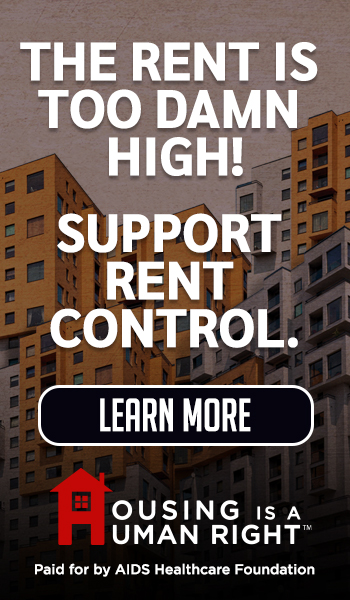Comments
iAUDIT! - Over the past seven months, LAHSA has been rocked by the release of two devastating audits and the revelation that its CEO, Dr. Va Lecia Adams Kellum, approved contracts for her husband’s nonprofit. As a result, last month, the County Board of Supervisors voted to withdraw $300 million of its funding from the authority, and the City may soon follow suit. The City and County are working on creating their own homelessness programs. The County plans to expand its existing Housing for Health initiatives and the City is considering creating a new “Bureau of Homelessness” to oversee its programs. All these changes may leave one wondering what plans elected leaders have for homelessness programs.
The short answer is: None. As I described in a previous column, neither the County nor the City are proposing fundamental changes. In fact, proposals intend to use the same providers to deliver the same services (or lack thereof) that have achieved almost no progress. The only difference will be they’ll have more money to burn because of Measure A’s revenues. Despite elected leaders’ assurances of bold new initiatives and strict accountability, there are no new plans. For proof of how ineffective the current system is, one needs only to visit the nearest freeway overpass, or drive by the vast encampments surrounding many shelters. Still, we need to look more closely at what is happening with existing programs.
First, let’s look at claims homelessness is decreasing. That perception is very much based on where you look. Where I live north of LAX, local counts have decreased in some areas while increasing in others. For example, because of intensive encampment clearances, homelessness in Venice has decreased while increasing in Westchester, as you can see in the chart below:

The same pattern holds for RV’s. There are relatively few in Venice (for now) but they have increased in Westchester, especially in Westchester Park and the streets surrounding OTIS College of Art and Design. At the same time, crimes attributed to the unhoused have been increasing. This is the stereotypical “whack-a-mole” approach the City has been using for years. It is entirely reactive; officials respond to where the most complaints are coming from, send resources into those areas (and starve others of services) until the complaints decrease. Then they repeat the same process in newly-affected communities.
The explanation as to why the whack-a-mole approach is used is because that’s all the City can conceive. Even though the Supreme Court’s Grants Pass decision gave cities more leeway in clearing encampments, especially in the case of people who refuse to move, Mayor Bass and the Council have steadfastly adhered to the false promise of its “compassion-first” approach that leaves thousands on our streets every night.
For a practical example of the consequences of the City’s policies, I will use a recent email thread between residents and a member of CD-11’s staff, trying to get a single tent encampment cleared from a parking lot. (I redacted the staff person’s name, because they are not responsible for the City’s policies, and it would be unfair to place personal blame for a systemic failure). The tent’s occupant has a long history of disruptive and dangerous behavior, including threatening patrons of local businesses with a knife. According to the staff person, a clearance “action” was scheduled for Thursday, May first, but didn’t take place because the various departments involved couldn’t coordinate their actions at the same time. In part, the staff person’s email said:
“I have spoken with our team and there is an operation confirmed for this Thursday at the location behind the xxxx. The area was originally scheduled last week, but the teams were not able to address it in their allotted work time. We typically have operations scheduled several weeks out, but there are circumstances on the ground that may shift the schedule the day of due to a number of logistical factors across all the city departments involved in these operations.
I had also submitted a request for the CIRCLE team to conduct outreach in the area. My understanding is these folks refused services. I am submitting an additional request today. I'd like to remind everyone that, at this point, there is no way for us to mandate that people accept services. That said, we will keep this area on our list to conduct operations regularly in hopes that will prevent the encampment from repopulating”.
When a resident asked why clearing this small camp was so complicated, the staff person replied:
“The type of operation I'm describing is called a CARE+ operation. These are conducted in concert with several city departments--including LAPD, LADOT, LA Sanitation, and LAHSA--which is why it takes several weeks to get one scheduled. These operations are mandatory cleanups in which LAHSA conducts outreach to individuals beforehand to offer services. We will also post signage beforehand to give notice that an operation will occur. This measure is required by law.
On the day of, all of the agencies listed above will arrive at the location and mandate that anyone there must move. The crews will then clear the area, clean up debris, and wash the location.
At this time, there is no legal recourse for us to prevent folks from returning after we conduct these operations, which is why we typically will continue to schedule locations multiple times to address them as frequently as resources allow”.
These few paragraphs perfectly frame everything that’s wrong with LA’s homelessness interventions. The CARE+ operation the employee referred to is designated for about $38.2 million in the proposed fiscal year 2025-26 budget, according to the City’s budget “Blue Book” (pp. 631-634). More than $38 million is being spent to clean areas where the inhabitants often return the same day. Encampments could be cleared if the City had a plan to shelter and house people, and had the political will to enforce camping bans as allowed by the Supreme Court. The City’s choice to spend millions on ineffective programs is as purposeful as it is misguided.
As you can imagine, this type of reactive policy tends to be very divisive. Looking at the chart, you can see how its sets one community against another, and indeed entire Council Districts against one another. Since the placement of shelters and housing is very much controlled by each Councilmember, some districts have more than others. Of course, what’s missing from this equation is the opportunity for substantive input from community members or organizations. Councilmembers often ignore the concerns and ideas from Neighborhood Councils, even though the NC’s have the closest connection to their communities.
The lack of coherent planning carries through to the City’s haphazard application of the Mayor’s emergency declaration on housing, ED-1. The declaration sidesteps many approval and review processes and gives developers incentives to build high-density “affordable” units. In theory, ED-1 projects should be equally spread throughout the city and within Council Districts. In reality, projects are jammed into communities that lack the political clout to stop them. Using CD-11 as an example, according to city records, Westchester has been approved for 1,088 ED-1 units, or 57 percent of the 1,898 units in all of CD-11. Venice, the Palisades (pre-fire) and Brentwood have none. Whatever one may think of affordable and supportive housing, it is hardly equitable to concentrate projects in a single neighborhood. As has been mentioned in several news stories, these developments will be built with no improvements to the city’s already-strained infrastructure system.
As we’ve seen many times, most recently in a Time article about a supportive housing project in DTLA, is that the support services needed by many to remain housed are rarely provided, and the facilities quickly degrade due to cheap construction and constant repair needs. The city’s plan seems to be “build first, worry about services later”, resulting in chaotic and dangerous living conditions for their residents.
In short, the city’s so-called plan is no plan at all. There is no system to effectively move people from the streets to shelters, and if they are placed in shelters, they get no help, those in shelters rarely receive housing, and that housing is often substandard. Until the city can create and sustain a coherent plan to address the homelessness crisis, it has no right to impose its failed policies on the general population.
NOTE: To register your disapproval of ED-1 on the Westside, click the link to a change.org petition here.
(Tim Campbell is a resident of Westchester who spent a career in the public service and managed a municipal performance audit program. He focuses on outcomes instead of process in his iAUDIT! column for CityWatchLA.)
















